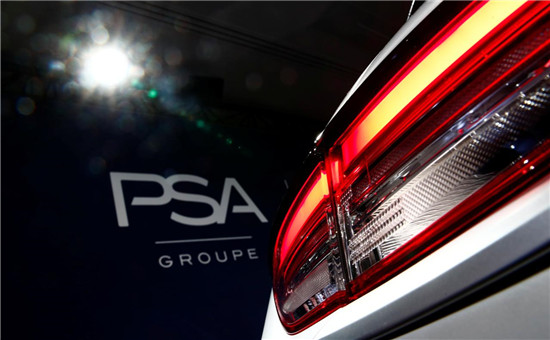Explain How Lithium Cobalt Compounds Produce Electricity in A Battery
Sep 20, 2019 Pageview:1329
Most lithium-ion batteries designed for portable applications like smartphones are cobalt-based. The system involves a cobalt oxide positive electrode and a graphite carbon negative electrode.
Cobalt is a glossy, hard, and silver-grey material, which is a by-product of copper and nickel mining. It is used as a cathode material in the lithium-ion batteries, but it is also used for creating many other things. If you’re curious to know the role of cobalt in lithium battery, you’ve come to the right place. Here, we help you to understand the cobalt role in the lithium battery and how the battery work.
Understanding the Role of Cobalt in lithium battery
A rechargeable lithium-ion battery contains two electrodes, which are submerged in an electrolyte solution and divided by a permeable polymer membrane. When the battery is in charging mode, lithium ions move from the +ve cathode to the -ve anode via the polymer membrane. When the battery is in discharge mode, the lithium ions move back from the anode to the cathode. In the procedure, electrons are sent to an electronic application, powering it in the procedure.
Moreover, carbon graphite is a usual anode material use in these batteries because it has a layered structure that can provide support as well as store the small lithium ions in between layers of it. As the battery working voltage depends on the difference in the electrochemical potential between the anode and the cathode, the cathode can’t be graphite, and most of the performance traits of the battery depending on the cathode material.
The cathode stores the lithium ions via the electrochemical intercalation - a chain by which the lithium ions are pulled from or put into lattice locations or positions inside the cathode material structure. Amongst the basic cathode materials is Li-CO-O2 (lithium-cobalt-oxide). When the battery designed utilizing these materials is in charge mode, lithium ions are pulled out of the oxide and then, put into a graphite electrode. In discharge mode, the reverse action takes place.
When lithium ions are removed from the oxide in the cathode, it owns a positive charge and that’s when cobalt role comes in. The cobalt is accountable for altering its oxidation state along with the oxide stays electrically in neutral mode. You will be amazed to know that the cobalt of small quantity shifts its oxidation state from three to four make up for the exclusion of the lithium-ion.
Lithium-cobalt-oxide is an intercalation compound with the cobalt, lithium, and oxygen arranged in 2-dimensional layers - a layer of lithium, after that a layer of oxygen and a layer of cobalt, a different oxygen layer, and a different lithium layer. And in an intercalation compound, the lithium can be eliminated and the basic structure should remain unmodified. What if the structure moves? It becomes very quite challenging to put back the lithium in.
The interesting thing is that a cobalt-enhanced structure can stand about 60% of the lithium being eradicated before it begins to change.
How Do lithium batteries Work?
Just like any other battery technology, a rechargeable lithium-ion battery contains one or more power-generating compartments called cells. Further, each cell contains the main three components -
· A positive electrode - connected to the +ve terminal of the battery.
· A negative electrode - connected to the -ve terminal of the battery.
· A chemical - an electrolyte in between them.
The positive electrode is usually made from a chemical compound - lithium-cobalt oxide or in a new battery - from lithium iron phosphate. The negative electrode is made from carbon. Well, all lithium-ion batteries worn in the same manner. When the battery is in charge mode, the lithium-cobalt oxide and electrode remain there. The battery stores the energy during the procedure. When the battery is in discharge mode, the lithium ions move back across the electrolyte to the +ve electrode and produce the energy that powers the battery. The ions movement (via the electrolyte) and the movement of the electrons (around the external circuit) are interconnected processes.
If either of the processes stops, so others will stop too. If the ions stop moving via the electrolyte since the battery is discharged completely, electrons can’t move through the external circuit either and thus, you will lose your power.
You will be glad to know that lithium-ion batteries come with in-built electronic controllers, which regulate how they discharge and charge to prevent the overheating and overcharging that can make batteries to explode in certain circumstances.
What Components Make a Lithium-ion Battery?
As we told earlier that there are three main components that make a lithium-ion battery and those are cathode, anode, and electrolyte. Besides three, there is one more important component of lithium-ion batteries and it is known as Separator.
· Cathode - it determines the voltage and capacity of the Li-ion battery. The battery produces the electricity via chemical reactions of lithium and that’s why the lithium is put into the battery and that room for lithium is called cathode.
· Anode - it sends electrons via a wire. Similar to the cathode, its substrate is coated with active material. The active material of the anode performs the role of allowing the electric current to flow via the outer circuit.
· Electrolyte - it enables the movement of the ions only. It acts as a medium that allows the movement of only lithium ions between the anode and cathode. It is composed of solvents, additives, and salts.
· Separator - it is the absolute barrier between the anode and the cathode. While the anode and cathode determine the battery performance, separator and electrolyte determine battery safety. The separator acts as a physical barrier that keeps the anode and cathode apart. It helps in preventing the direct flow of electrons and carefully allows the movement of the ions via the internal microscopic hole.
We hope that our guide has helped you to have a basic idea about the components and working of lithium-ion batteries work.
- Prev Article: Best High Drain 18650 Battery
- Next Article: Lithium battery storage temperature-chemical storage
Leave Message
Hottest Categories
-
Hottest Industry News
-
Latest Industry News











